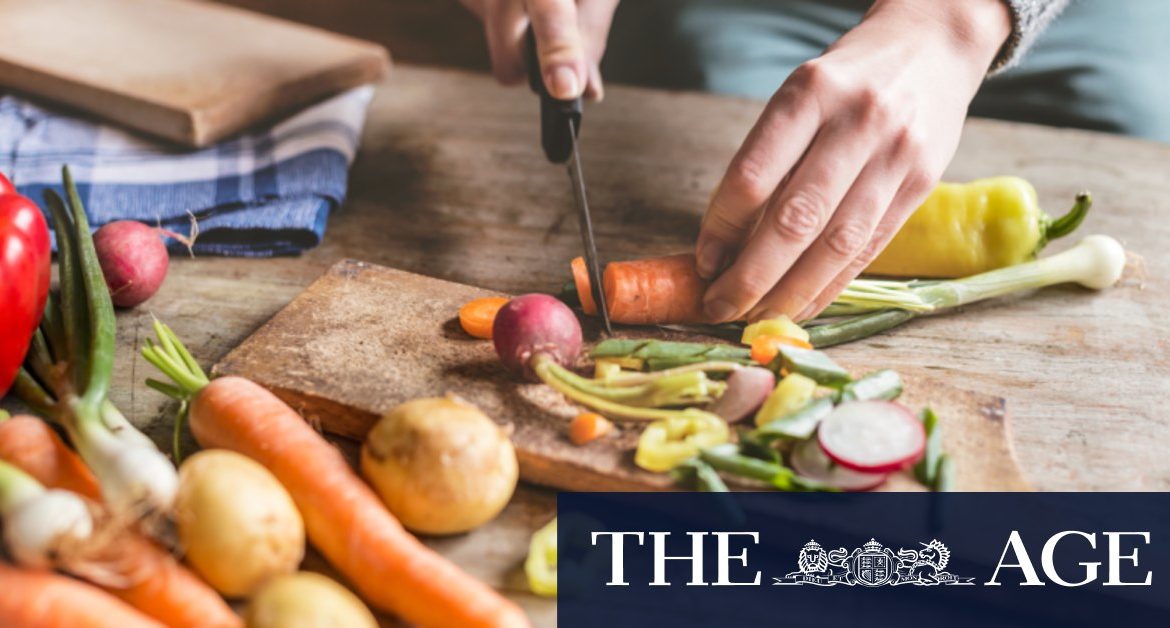Until I was four years old, I lived with my grandmother in China while my parents emigrated to Australia to forge a new life for us. My grandmother’s kitchen was incredibly humble, just a sink and a gas stove with a large wok. We lived in the heart of Guangzhou, and we were the only ones in our street with indoor plumbing.
The rituals I remember all revolved around eating: the washing of rice, the peeling of vegetables, shopping for groceries in the street markets. My grandmother couldn’t read or write, but she had a special skill in ensuring there was always food for everyone in the household. My mother tells stories of growing up in China in the 1960s when there was a black market for meat. Meat was a rare commodity, to be eaten during Chinese New Year as treat, and otherwise was rationed to tiny portions each month. Food is an important part of my life today because I have known what it is like to have little, and I’ve also known excess.
Cut up fresh produce and place into large glass jars or containers ready to be used.Credit:iStock
If you are reading this, it is likely you are living in the developed world, where excess is a problem rather than deficiency. It is therefore our duty to be responsible food advocates, because there are so many people in the world who still live with less. Teaching your children about where food comes from is an important first step in showing them all the resources that are required to bring a meal to your table. When you are wasting food, it isn’t just the piece of broccoli that you’re sending to landfill: the labour used to grow the food, the energy used to harvest it, the resources used in transporting it, the hard-earned money used to buy it and the time and effort taken to cook it before it arrives on your dinner plate are all wasted too. Let’s stop wasting food today.
Here are some simple ideas to prevent food waste in the home.







